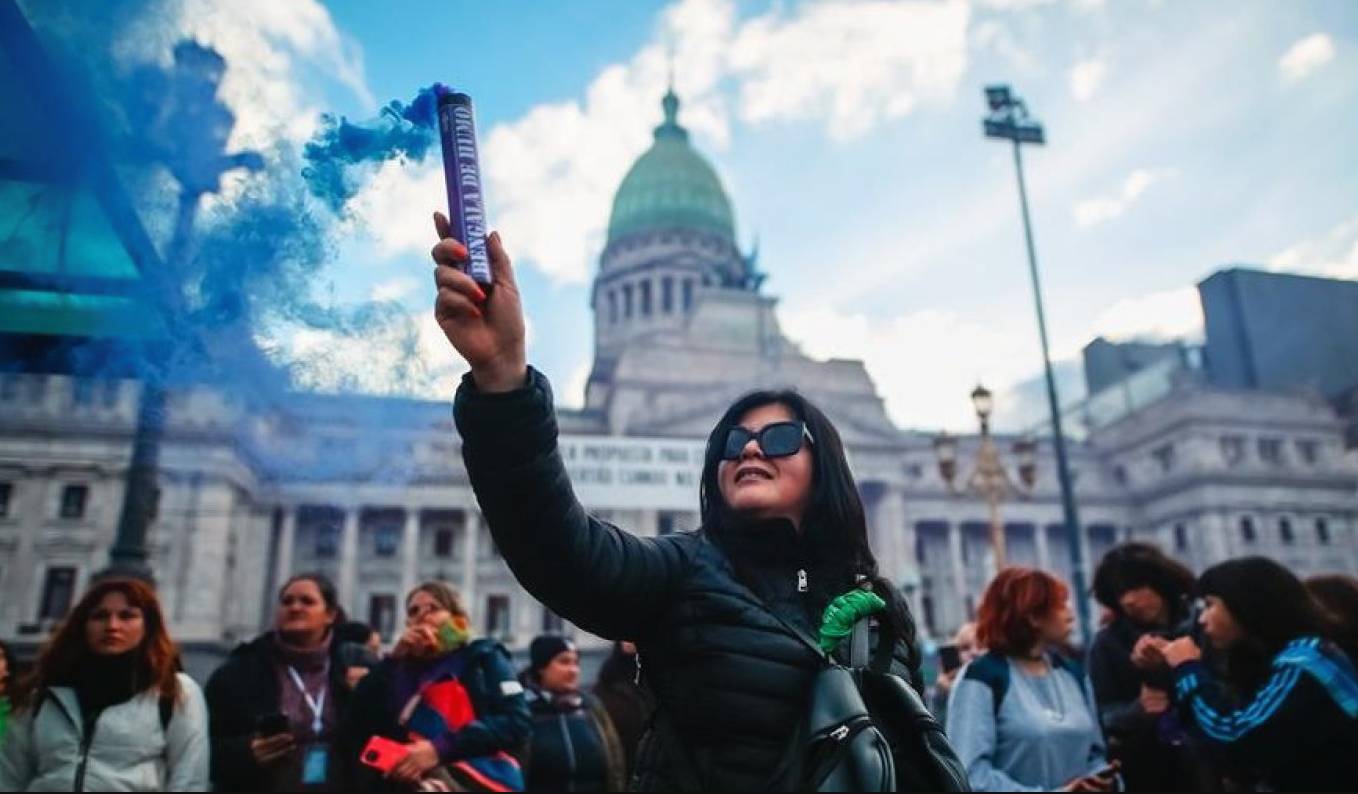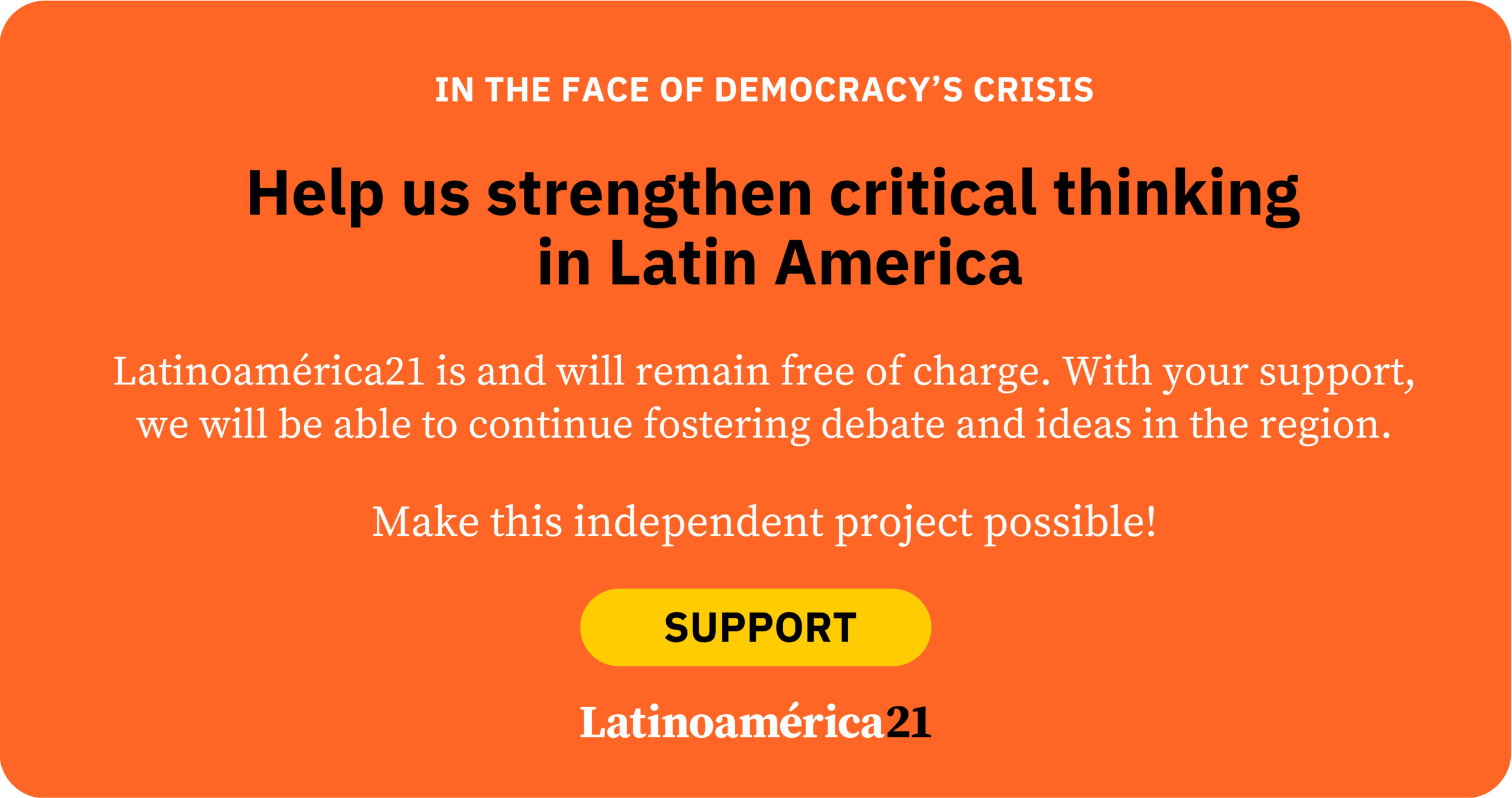In his first-year address, Panamanian President Raúl Mulino announced that the Ministry of Women will be downgraded to a secretariat under the Ministry of Social Development, as part of a reform to “dismantle overlapping structures that were designed in a different era.”
Earlier in 2024, Argentine President Javier Milei shut down the Ministry of Women, Gender and Diversity for “imposing an ideological agenda.” Activists in the country say that since then, there are no longer any government bodies to implement women’s programs, and gender violence prevention initiatives have been slashed.
In Mexico, the local Congress of Morelos recently repealed Article 23-D of the state constitution, effectively dissolving the state’s Women’s Institute once the reform is ratified by a majority of local governments. However, at the national level, Claudia Sheinbaum elevated Mexico’s National Women’s Institute to the status of a secretariat—though with budget cuts where resources are most needed: shelters, justice services, and prevention.
In Brazil, the Ministry of Women, Family and Human Rights was temporarily dissolved in 2016, with its functions absorbed by the Ministry of Justice. It was later reinstated, and the country now has a Ministry of Women again. In Peru, Congress has debated changing the name of or eliminating the Ministry of Women and Vulnerable Populations, though no formal elimination has yet been approved. Similar proposals have been floated in Chile and Ecuador, aiming to downgrade the ministry to a sub-secretariat or eliminate it entirely, but none have been implemented so far.
Elsewhere in the world, when the Taliban returned to power in Afghanistan in 2021, the Ministry of Women’s Affairs was dissolved and replaced by the “Ministry for the Propagation of Virtue and Prevention of Vice.” A different political system, same misogyny?
Why do women’s ministries exist?
Women’s ministries in Latin America emerged in the 1980s and 1990s in response to growing feminist demands, international commitments to gender equality, and the recognition of the need for public policies focused on women’s rights. Their creation marked a broader effort to institutionalize gender equity in the region, addressing issues such as violence, workplace discrimination, and political exclusion.
The World Conference on Women in Mexico City (1975), and especially the one in Beijing (1995), encouraged the establishment of institutional mechanisms to promote gender equality. Latin American governments began creating offices, councils, or institutes for women’s affairs, which later evolved into full-fledged ministries. This institutional framework was seen by international bodies as a key step toward more inclusive democracies.
By 2021, 44% of countries in the region had a Ministry of Women, while others had lower-level gender-related structures. A longitudinal analysis shows that most countries maintained or upgraded the rank of these offices. Yet despite this progress, the region still exhibits weak institutions that threaten their ability to fulfill their mandate—and as we’ve seen in recent political shifts, even their very existence is now at stake.
What’s behind this dismantling trend?
Governments that opt to eliminate or reduce these ministries usually cite a mix of economic, ideological, and administrative reasons. Among some political and social sectors—especially conservative ones or those with limited gender education—it’s common to hear that women’s ministries are “just bureaucracy” or a “waste of resources.” In times of economic crisis, cost-cutting rhetoric often targets social ministries, including those for women.
These arguments overlook the fact that women’s ministries coordinate policies to prevent violence, improve access to justice, promote decent employment, and reduce inequality. These functions not only protect rights—they also reduce long-term social and economic costs. The data is clear: one in three women experiences violence; women earn less and shoulder more unpaid care work; inequality holds back the entire country’s development. A dedicated ministry enables the design of targeted policies—something other ministries neither prioritize nor are equipped to do. Every woman without access to a shelter, every girl without sex education, every mother without a care system is a reflection of how the absence of gender policies reproduces inequalities that eventually burden the state in the form of social crises.
Some conservative factions within governments have labeled these institutions as promoters of an “ideological agenda,” accusing them of being politically biased rather than socially driven. This narrative has gained traction, particularly where anti-gender ideology discourse has been adopted as part of the official narrative.
Other governments argue that their functions can be absorbed by other agencies, such as the ministries of social development or justice, without weakening gender policy. But in practice, this approach has repeatedly failed. Even when framed as efforts to improve efficiency, cutting or merging these ministries typically results in reduced capacity for gender action.
Beyond these justifications, recent developments in Latin America point to a deeper conflict: the place of women’s rights in today’s political projects. Civil society organizations, public policy experts, and international bodies have all voiced concern over these rollbacks. The main fear is a loss of focus and priority—when gender policies are absorbed into broader structures, they tend to receive less funding, staffing, and implementation power.
Encapsulating gender? The dilemma of institutionalizing equality
In recent decades, Latin America has seen the creation—and in some cases dismantling—of a range of state institutions aimed at addressing gender inequality: ministries, institutes, observatories, and academic chairs. Many of these were created thanks to feminist advocacy and are rightly celebrated as political achievements. Yet they’ve also been the subject of ongoing critique: are we, in fact, isolating a structural problem within a single office, when what we need is a cross-cutting social transformation?
It’s a fair question. What’s the point of having a Ministry of Women if the rest of the state continues to operate with patriarchal logic? Isn’t that, in effect, a way of shifting responsibility—as if gender equality were a “women’s issue” rather than a societal one?
This tension is real. And it is valid. But so is the reality that without dedicated institutions, gender issues tend to vanish from political agendas. Globally, only 4% of official development assistance was allocated to programs with gender equality as the main objective in 2021–2022. Strong, gender-focused budgets are crucial for building a fairer and more developed society—and the clearest sign of genuine political will. It’s not about “spending on women,” but about ensuring that public resources benefit everyone equitably by correcting structural gender disparities.
Institutional specialization is not just symbolic—it’s a technical, political, and strategic tool. Women’s ministries and institutes have been key to generating data where there was none, passing long-overdue laws, and training public officials in gender perspectives. They are a bridge between the state and social movements, and they should also serve as coordination hubs across sectors: health, education, security, justice, and the economy.
However, many of these bodies are created without sufficient funding, real influence, or autonomy—and they risk becoming token institutions for governments that in practice do not prioritize substantive gender equality.
The dilemma is clear: without specific institutions, there can be no real gender policy. But if those institutions are isolated, weakened, or hollowed out, they risk becoming empty shells, useful only for appearances.
In an ideal world, we wouldn’t need a Ministry of Women—because equality would be built into all public policy. But we don’t live in that world. We live in one where gender-based violence still kills, where economic and labor gaps persist, and where being a woman, poor, elderly, or Indigenous remains a basis for exclusion.
That’s why, rather than asking whether these institutions should exist, perhaps the better question is: how do we ensure their existence is not an excuse but a genuine engine of transformation? Gender issues shouldn’t be siloed—but they do, for now, need a stronghold from which to fight for space at the heart of the public agenda.
Staying focused
This debate is not just about whether ministries exist, but about the state’s ability to design and implement effective public policies that uphold women’s rights. Shutting down these institutions sends a devastating symbolic message: that gender issues are expendable, secondary, or even suspect. In countries where gender-based violence remains widespread, and femicide rates are alarmingly high, reducing institutional attention to the issue could cost lives.
Faced with efforts to dismantle or dilute these bodies, it’s time to imagine new models that blend specialization with cross-sector reach, funding with accountability, and representation with real policy impact. Gender equality cannot be an optional chapter—it must be a shared conviction. Defending what has been won means not just resisting regression, but using this moment as an opportunity to build something better.
Machine translation, proofread by Ricardo Aceves.













